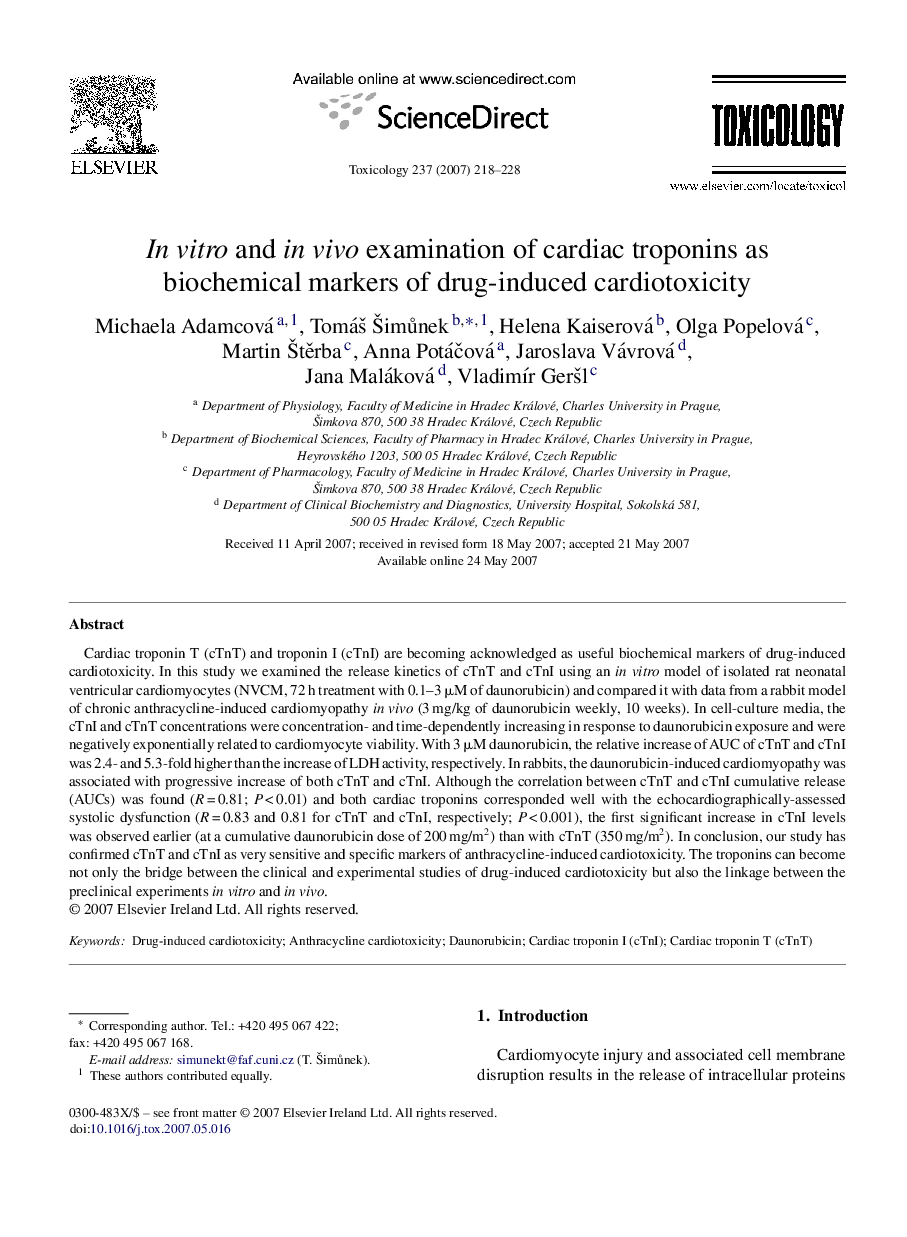| Article ID | Journal | Published Year | Pages | File Type |
|---|---|---|---|---|
| 2597759 | Toxicology | 2007 | 11 Pages |
Cardiac troponin T (cTnT) and troponin I (cTnI) are becoming acknowledged as useful biochemical markers of drug-induced cardiotoxicity. In this study we examined the release kinetics of cTnT and cTnI using an in vitro model of isolated rat neonatal ventricular cardiomyocytes (NVCM, 72 h treatment with 0.1–3 μM of daunorubicin) and compared it with data from a rabbit model of chronic anthracycline-induced cardiomyopathy in vivo (3 mg/kg of daunorubicin weekly, 10 weeks). In cell-culture media, the cTnI and cTnT concentrations were concentration- and time-dependently increasing in response to daunorubicin exposure and were negatively exponentially related to cardiomyocyte viability. With 3 μM daunorubicin, the relative increase of AUC of cTnT and cTnI was 2.4- and 5.3-fold higher than the increase of LDH activity, respectively. In rabbits, the daunorubicin-induced cardiomyopathy was associated with progressive increase of both cTnT and cTnI. Although the correlation between cTnT and cTnI cumulative release (AUCs) was found (R = 0.81; P < 0.01) and both cardiac troponins corresponded well with the echocardiographically-assessed systolic dysfunction (R = 0.83 and 0.81 for cTnT and cTnI, respectively; P < 0.001), the first significant increase in cTnI levels was observed earlier (at a cumulative daunorubicin dose of 200 mg/m2) than with cTnT (350 mg/m2). In conclusion, our study has confirmed cTnT and cTnI as very sensitive and specific markers of anthracycline-induced cardiotoxicity. The troponins can become not only the bridge between the clinical and experimental studies of drug-induced cardiotoxicity but also the linkage between the preclinical experiments in vitro and in vivo.
